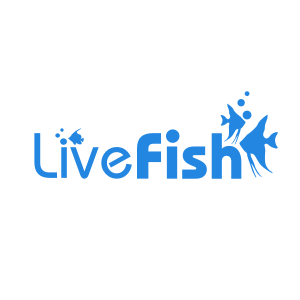Zebra Moray Eel SML
The Zebra Moray Eel is an eye-catching addition to your tank and the most suitable eel to co-habit with small fish.
Aquarists who can accommodate the tank size and the lifespan of the Zebra Moray will find it makes a great addition to a peaceful or semi-aggressive tank community.
The Zebra Moray Eel has a peaceful temperament and is not a danger to fish who live with it.
Its body colour varies from medium/dark brown to black, with thin white or pale, yellow stripes. Zebra Morays can live for over 20 years
Reproduction involves a courting which starts with them opening their mouths wide at each other and then intertwining their bodies.
The female lays free-floating eggs which the male fertilises. After hatching young Zebra Moray larvae float near the ocean surface for around 8 months. Swimming down to the reef once they have reached a size where they can defend themselves.
Zebra Moray Eels do not pose a threat to other fish or aquarists, but they do have 2-3 rows of molar teeth on each jaw and several rows in the roof of their mouth.
They have poor eyesight and rely on their acute sense of smell. This can pose a risk of getting accidentally bitten if your hand is in the aquarium and they mistake it for prey.
In the wild Zebra Morays live around coral reefs near ledges or crevices. They swim to depths of around 130 feet (40m) and reach a length of up to 5 foot (152 centimetres) in length.
Zebra Morays need a moderate level of care. It is more suitable for a dedicated aquarist due to its’ lifespan and necessary tank size.
Tank Recommendations for the Zebra Moray Eel
Tank size should be at least 250 gallons (946 litres). Calculations based on using 50 gallons for every foot of eel, but they do grow up to 5 feet long.
As well as a large tank, Zebra Moray Eels also need to plenty of available hiding places. These can be crevices, caves, or castles, but they must be big enough to conceal the whole of the eels’ body.
The water pH level needs to be consistent as a low pH will create changes in colour and behaviour.
Suitable Tank Buddies
Zebra Morays do not bother other fish in the tank, but they will eat crustaceans in the tank.
While eels are juveniles there is a risk of larger fish such as Groupers eating them.
Usually Compatible
Zebra Morays can cohabit in a peaceful to semi- aggressive tank with fish such as Large Angels, Boxfish, Grunts/Sweetlips, Lions/Scorpions, Puffers and Tangs. Pebble Toothed Eels and less aggressive, smaller Morays are also suitable.
Sometime Compatible
Two similar Morays can live together. If doing this then introduce them at the same time. The tank size should be almost double with plenty of hiding places.
Only house adult grown Zebra Morays with mature Soapfish, Groupers or fish-eating eels.
Cleaner Shrimp are generally safe if already present before the Zebra Moray.
Rarely Compatible
Avoid fragile SPS corals such as digita or birds nest. Sea Fans are not sturdy enough to survive the Zebra Morays activity. Small crustaceans are at risk of being eaten.
Feeding Your Zebra Moray Eel
Zebra Moray Eels are carnivores. They eat a variety of crustaceans, molluscs and sea urchins, and can also eat small fish, squid, and krill. You can use a feeding stick to feed them, which can teach them to wait for food.
They have been recorded consuming up to 3.6 times their own body weight in the wild.
In captivity you should feed adults once a week, juveniles more often. Flake food and pellets are not suitable for consumption.
| Scientific Name | Gymnomuraena zebra |
|---|---|
| Care Level | Moderate |
| Common Names | Zebra Moray Eel, Zebra Eel, Zebra Moray and Reticulated Moray |
| Diet | Carnivore |
| Fish Family | Muraenidae |
| Lifespan (years) | 20 |
| Max. Length (cm) | 152 |
| Min. Tank Volume (l) | 946 |
| Origin | Indo-Pacific and Eastern Central Pacific regions, including the East African coast, Persian Gulf, Red Sea, Indonesia, Hawaii, the Great Barrier reef, and from California down to Colombia |
| Reef Safe | With Caution |
| Sociability | Peaceful |
| Venomous | No |
| Water Conditions | 22.2-27.8 C (72-82° F) dKH 8-12, pH 8.1-8.4, sg 1.020-1.025 |


